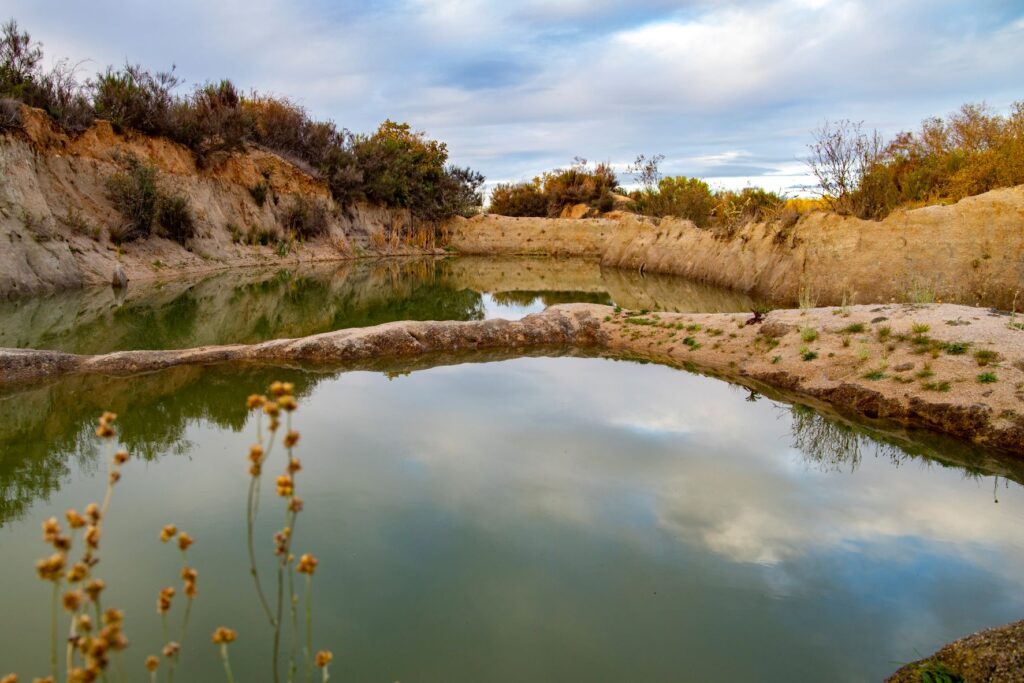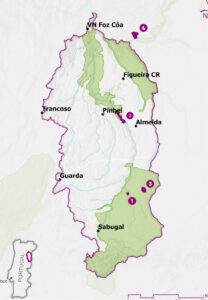In Portugal’s Greater Côa Valley, Paul de Toirões is the fourth rewilding site in an expanding network. With the local rewilding team overseeing key restoration measures, it will become an increasingly important ecological stepping stone.

Joined up thinking
The Paul de Toirões rewilding site in Portugal’s Greater Côa Valley rewilding landscape is set to become an important ecological stepping stone, with the local rewilding team now overseeing a range of restoration measures. The team are engaged in the long-term management of the nearly 300-hectare site for a private investor, who acquired it in 2021. Paul de Toirões is located around 7 kilometres from Vale Carapito, another rewilding site in the valley where Sorraia horses were released in 2021, and the valley’s fourth rewilding site in total.
“The rewilding of Paul de Toirões fits in with the strategy of acquiring and managing multiple pieces of land along the Greater Côa Valley,” says Pedro Prata, leader of the local rewilding team. “Restoration measures here will enhance connectivity, food chains and natural processes, contributing to the creation of an increasingly wild corridor of land. This site will demonstrate how rewilding can be a viable land use solution, even in the most human-altered landscapes.”

A strategic sanctuary

Formerly known as Quinta de Santa Margarida, the newly renamed Paul de Toirões rewilding site was once heavily mined. Although mining operations ceased almost a decade ago, this left a legacy of shafts, holes and pits. The site has already started returning to nature – many of the excavations have filled with water, creating a complex of lagoons, channels and ponds. Paul de Toirões is already rich in nature and home a wide range of aquatic flora and fauna, such as the beautiful European pond turtle. A population of black stork also feeds and takes refuge here regularly.
“Paul de Toirões is not actually located on the valley floor, but on a mostly dry plateau, which increases its importance for birds and mammals crossing through the area,” says Pedro Prata. “Having permanent water and shelter makes this site a strategic sanctuary.”

A wilder, more resilient oasis
Going forwards a range of interventions will increase the natural value of the Paul de Toirões rewilding site.
“Some of the first management measures we have planned are to move earth in the most recently mined areas – smoothing slopes, facilitating access, and reducing the risk to wildlife – as well as increasing the area of flooding,” says Pedro Prata.
The rewilding team will also work to improve some of the vegetation, removing exotic species and diversifying forested areas with native trees. The creation of topsoil will be encouraged by mulching the area with straw, which is rich in seeds, while all rubbish will be removed. Rabbits and deer may also be released.
“As climate change impacts the landscape, Paul de Toirões could function as an oasis for wildlife in the Greater Côa Valley, guaranteeing the permanence and return of many essential species to the ecosystem,” says Pedro Prata. “In time, it will also help to underpin the valley’s developing nature-based economy.”
Mossy Earth, which focuses on generating community-based funding, is supporting the rewilding of Paul de Toirões.

